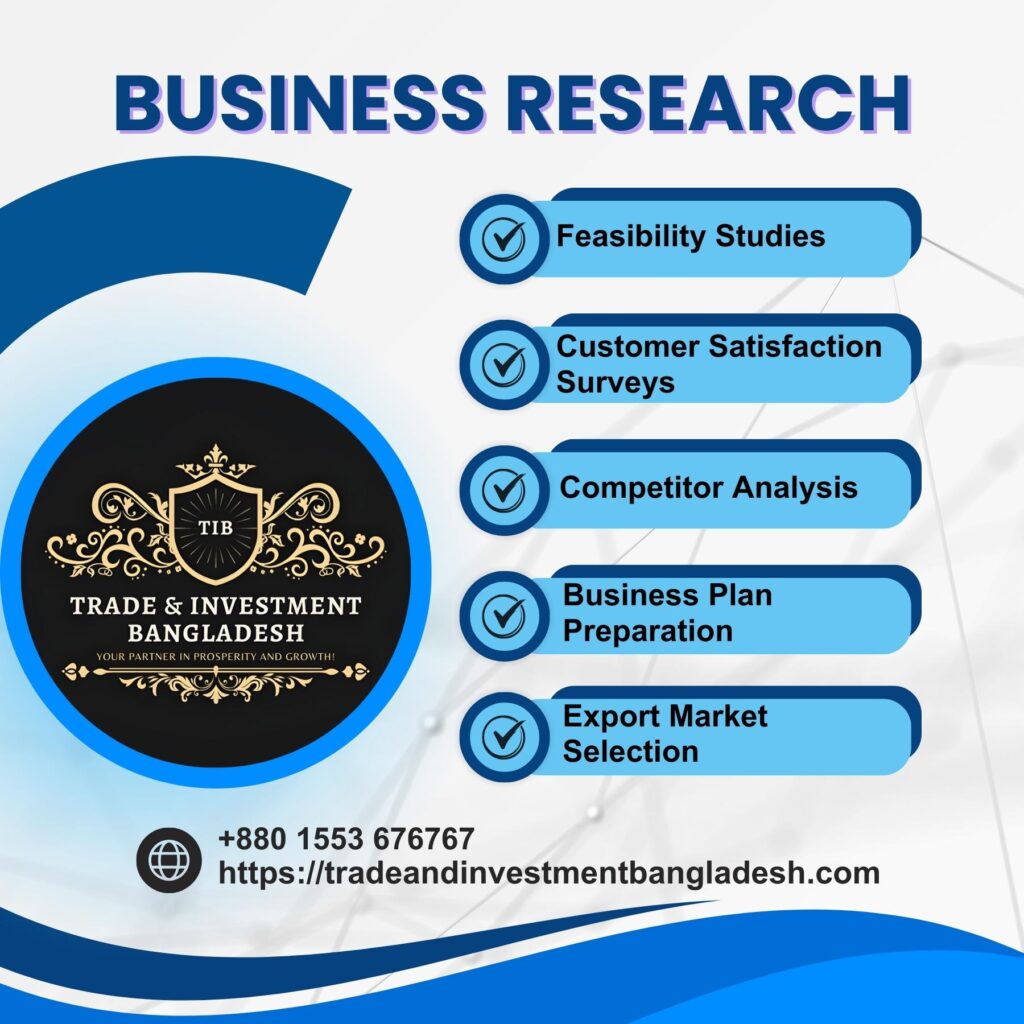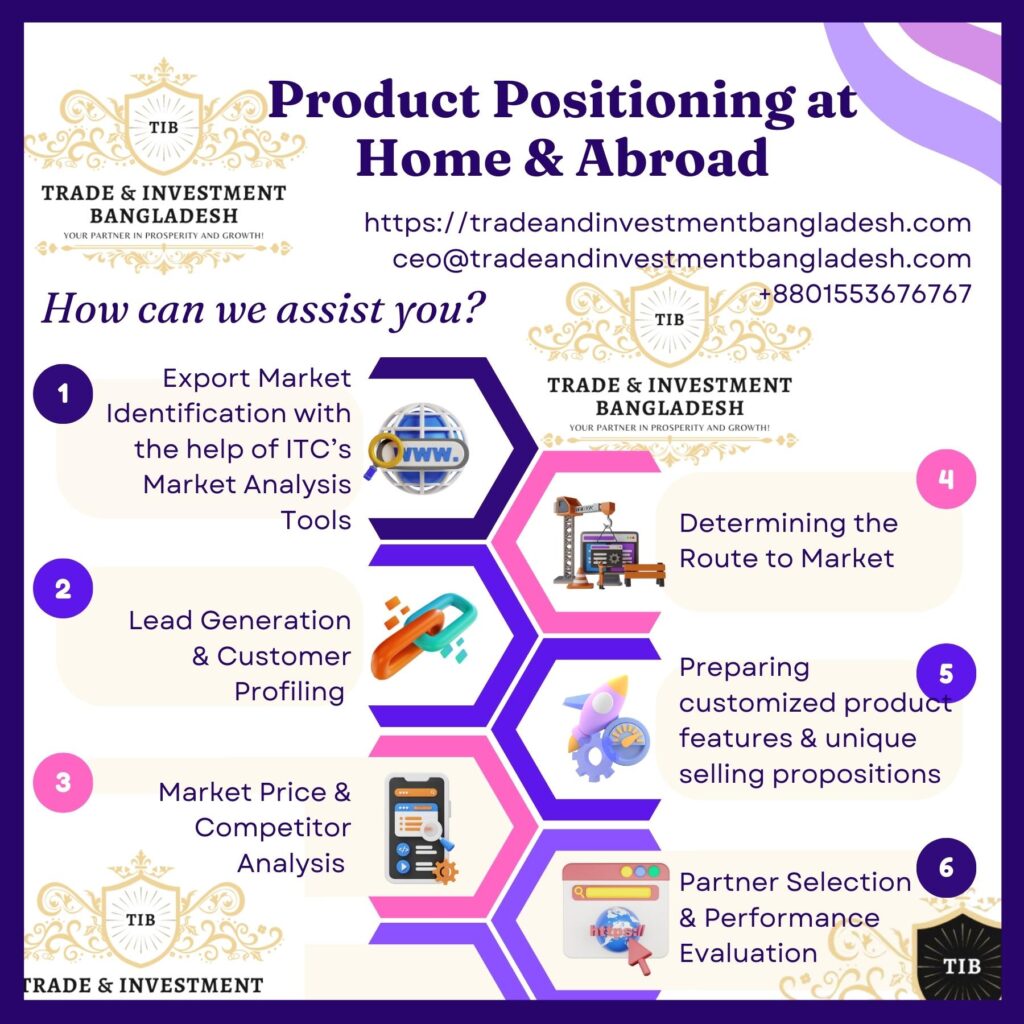
Future of Business: E-commerce & Retail
Future of Business: E-commerce & Retail
Md. Joynal Abdin, BBA (Hons.), MBA
Founder & CEO, Trade & Investment Bangladesh
The future of business in the realms of e-commerce and retail is a fascinating and transformative landscape, driven by a confluence of technological innovations, shifting consumer expectations, and dynamic market trends. As we venture into this new era, several key segments are poised to redefine the way commerce operates, promising a more connected, personalized, and sustainable shopping experience.
Omnichannel retail integration stands out as a pivotal force shaping the future. The traditional boundaries between physical and online stores are fading as businesses increasingly recognize the need for a seamless, integrated shopping journey. Consumers today expect a unified experience, whether they are browsing through a physical store, exploring a website, or using a mobile app. The businesses that successfully bridge these channels will not only meet these expectations but also foster a stronger connection with their customers.
Personalized shopping experiences represent another frontier in the evolution of e-commerce and retail. With the aid of sophisticated data analytics and artificial intelligence, businesses can now tailor their offerings to individual preferences and behaviors. The era of one-size-fits-all marketing is giving way to hyper-personalization, where recommendations, promotions, and content are finely tuned to meet the unique needs of each customer.
Moreover, a growing emphasis on sustainable and ethical retail practices is reshaping the industry’s ethos. Consumers, increasingly conscious of the environmental and social impact of their purchases, are gravitating towards businesses that prioritize sustainability and ethical sourcing. This shift not only reflects a change in consumer values but also presents an opportunity for businesses to align themselves with a greater sense of purpose.
As we look ahead, technologies such as augmented reality (AR) and virtual reality (VR) are poised to revolutionize the shopping experience, allowing customers to visualize products in immersive ways before making a purchase. Artificial intelligence (AI) is becoming a linchpin in retail operations, optimizing everything from inventory management to customer service, while contactless commerce and payment methods continue to gain traction, driven in part by the need for safety and convenience in a post-pandemic world.
In this ever-evolving landscape, businesses that embrace these trends and innovations will not only survive but thrive in the future of e-commerce and retail. The ability to adapt, integrate technology seamlessly, and prioritize customer-centric strategies will be the cornerstone of success in this dynamic and exciting business frontier.

Types of E-commerce Business:
The classification of e-commerce and retail businesses is a nuanced endeavor, given the diverse nature of products, services, and operational models within this dynamic sector. This classification is often based on the nature of transactions, the parties involved, and the platforms used. Here, we delve into four primary classifications that encapsulate the breadth and depth of e-commerce and retail: B2C, B2B, C2C, and M-commerce.
- B2C (Business-to-Consumer): B2C e-commerce refers to transactions conducted directly between a business and individual consumers. In this model, businesses sell products or services directly to end-users through online platforms or traditional retail channels. Examples include online retailers like Amazon, fashion brands with e-commerce stores, and electronics stores selling directly to consumers.
B2C transactions are typically characterized by relatively small purchase volumes, a wide variety of products, and a focus on creating a seamless and user-friendly customer experience. Marketing efforts often target individual consumers, aiming to attract and retain a broad customer base.
- B2B (Business-to-Business): B2B e-commerce involves transactions between businesses. In this model, one business sells products or services to another for use in their operations or for resale. Examples include manufacturers selling raw materials to other businesses, software companies licensing their products to enterprises, and wholesalers supplying products to retailers.
B2B transactions often involve larger volumes, longer sales cycles, and a focus on building lasting business relationships. The purchasing decision may involve multiple stakeholders, and the emphasis is on providing solutions that meet the specific needs of the buying business.
- C2C (Consumer-to-Consumer): C2C e-commerce involves transactions between individual consumers. In this model, individuals sell products or services directly to other consumers through online platforms. Examples include online marketplaces like eBay and classified ad websites where individuals can buy and sell used goods.
C2C transactions are typically decentralized, with individuals acting as both buyers and sellers. Trust and reputation systems play a crucial role, and platforms facilitate transactions while providing a space for individuals to connect and transact.
- M-commerce (Mobile Commerce): M-commerce refers to transactions conducted through mobile devices, such as smartphones and tablets. It encompasses a variety of e-commerce models, including B2C, B2B, and C2C, but with a specific focus on mobile platforms.
M-commerce leverages the convenience and ubiquity of mobile devices, allowing users to shop, pay, and engage with businesses on the go. Mobile apps, mobile-optimized websites, and mobile payment systems are key components of the M-commerce landscape.
These classifications provide a broad framework for understanding the diverse landscape of e-commerce and retail businesses. It’s important to note that many businesses may operate in multiple categories, and the lines between these classifications can blur as the industry continues to evolve. Additionally, emerging trends, such as social commerce and voice commerce, contribute to the dynamic nature of this sector, continually expanding the ways in which businesses and consumers interact in the digital marketplace.

Basic Infrastructure of E-commerce:
The basic infrastructure of e-commerce encompasses a variety of technological, logistical, and operational components that work together to facilitate online transactions and provide a seamless shopping experience for users. From website development to secure payment gateways, the infrastructure of e-commerce is critical for the success and efficiency of online businesses. Here’s an overview of the key elements:
- Website and User Interface: The foundation of e-commerce infrastructure is a well-designed and user-friendly website. This includes a visually appealing interface, intuitive navigation, and clear product displays. The website should be responsive, ensuring a consistent and optimized experience across various devices.
- E-commerce Platform: Businesses often use specialized e-commerce platforms or content management systems (CMS) tailored for online retail. Platforms like Shopify, Magento, WooCommerce, and others provide tools for inventory management, order processing, and customization to meet the unique needs of e-commerce businesses.
- Product Catalog and Inventory Management: An effective e-commerce infrastructure includes a robust product catalog system that allows businesses to showcase their products with detailed descriptions, images, and pricing. Inventory management ensures real-time updates on product availability, preventing overselling and backorders.
- Shopping Cart and Checkout Process: The shopping cart is a fundamental component that enables users to add products, review their selections, and proceed to checkout. The checkout process should be streamlined, secure, and user-friendly, with multiple payment options to cater to diverse customer preferences.
- Payment Gateway: A secure payment gateway is essential for processing online transactions. This infrastructure component encrypts sensitive financial information, ensuring the safety of customer data. Popular payment gateways include Stripe, PayPal, and Square.
- Security Measures: Security is a paramount concern in e-commerce infrastructure. SSL (Secure Socket Layer) certificates encrypt data transmitted between the user’s browser and the server, protecting against unauthorized access. Regular security audits, firewalls, and other measures are implemented to safeguard customer information.
- Logistics and Order Fulfillment: The logistics infrastructure involves partnerships with shipping carriers, order fulfillment centers, and effective supply chain management. Seamless integration between the e-commerce platform and logistics partners ensures accurate tracking, timely deliveries, and efficient order fulfillment.
- Customer Relationship Management (CRM) System: A CRM system helps businesses manage customer interactions, track purchasing behavior, and personalize communication. This infrastructure component contributes to building customer loyalty and enhancing the overall shopping experience.
- Analytics and Reporting: E-commerce businesses rely on analytics tools to gather insights into user behavior, website performance, and sales data. This information is invaluable for making data-driven decisions, optimizing marketing strategies, and improving the overall e-commerce infrastructure.
- Responsive Customer Support: A responsive customer support infrastructure, including live chat, email, and phone support, is crucial for addressing customer inquiries, concerns, and issues promptly. Excellent customer service contributes to positive user experiences and repeat business.
Building a robust e-commerce infrastructure involves careful consideration of each of these components, ensuring they work seamlessly together to create a secure, efficient, and user-friendly online shopping environment. As technology continues to advance, e-commerce businesses must stay adaptable and incorporate innovations to meet evolving customer expectations.

Advantages of E-commerce Business in Bangladesh:
E-commerce has emerged as a transformative force in the global business landscape, and Bangladesh is no exception to this trend. The advantages of e-commerce in Bangladesh are manifold, contributing to economic growth, job creation, and enhanced consumer experiences. Here are some key advantages of e-commerce business in Bangladesh:
- Market Accessibility and Reach: E-commerce breaks down geographical barriers, providing businesses in Bangladesh with the opportunity to reach a global audience. This increased market accessibility allows even small and medium-sized enterprises (SMEs) to showcase their products and services to a much broader customer base, fostering economic growth.
- 24/7 Availability: Unlike traditional brick-and-mortar stores with fixed operating hours, e-commerce platforms are open 24/7. This continuous availability enables consumers to shop at their convenience, irrespective of time zones or holidays, enhancing customer satisfaction and potentially increasing sales.
- Cost Efficiency: E-commerce eliminates many of the overhead costs associated with physical stores, such as rent, utilities, and maintenance. This cost efficiency allows businesses to offer competitive pricing, attracting price-sensitive consumers. Moreover, online marketing is often more cost-effective than traditional advertising methods.
- Job Creation: The growth of e-commerce in Bangladesh has led to the creation of numerous jobs across various sectors. From web developers and graphic designers to logistics and customer support professionals, the e-commerce ecosystem generates employment opportunities, contributing to the country’s overall economic development.
- Convenience and Time Savings: E-commerce provides consumers with unparalleled convenience. Shoppers can browse, compare, and purchase products or services from the comfort of their homes or on the go using mobile devices. This convenience saves time and effort, leading to a more positive customer experience.
- Diverse Product Range: E-commerce platforms offer a vast array of products and services from different vendors, allowing consumers to access a diverse range of options. This variety is particularly beneficial in a country like Bangladesh, where traditional retail infrastructure might be limited in certain regions.
- Payment Options and Security: E-commerce has facilitated multiple payment options, including credit/debit cards, mobile wallets, and cash-on-delivery, making transactions more flexible for consumers. Additionally, advancements in online security measures have increased consumer trust in making online transactions.
- Data-driven Decision Making: E-commerce platforms collect a wealth of data on consumer preferences, behavior, and buying patterns. This data can be analyzed to make informed business decisions, tailor marketing strategies, and optimize the overall customer experience.
- Reduced Environmental Impact: E-commerce can contribute to environmental sustainability by reducing the need for physical retail spaces and minimizing the carbon footprint associated with transportation. Digital transactions and online communication also reduce paper usage.
- Government Initiatives and Support: The government of Bangladesh has recognized the importance of e-commerce and has taken initiatives to support its growth. Policies and regulations have been developed to create a favorable environment for e-commerce businesses, encouraging innovation and investment.
In conclusion, the advantages of e-commerce in Bangladesh are instrumental in fostering economic growth, promoting entrepreneurship, and improving the overall standard of living. As technology continues to advance, the e-commerce sector in Bangladesh is poised to play an increasingly significant role in shaping the country’s business landscape.

Challenges of E-commerce Business in Bangladesh:
While the e-commerce sector in Bangladesh is experiencing rapid growth, it also faces several challenges that need to be addressed for sustained success. Here are the top five challenges:
- Limited Internet Penetration: One of the primary challenges for e-commerce in Bangladesh is the limited internet penetration, especially in rural areas. While urban centers may have relatively better connectivity, a significant portion of the population still lacks reliable and high-speed internet access. This hinders the potential customer base for online businesses, making it crucial to expand internet infrastructure to reach a broader audience.
- Trust and Security Concerns: Building trust is crucial for the success of e-commerce, and in Bangladesh, there are still concerns related to online security and fraud. Many consumers are hesitant to share sensitive information online, such as credit card details. E-commerce businesses need to invest in robust cybersecurity measures and educate consumers about the security protocols in place to address these concerns and build trust.
- Logistical Challenges: The logistics infrastructure in Bangladesh faces challenges in terms of reliability, speed, and cost-effectiveness. Timely and efficient delivery is crucial for customer satisfaction, but inadequate transportation networks and last-mile delivery hurdles can result in delays and increased operational costs. Improving logistics and supply chain management is essential to overcoming this challenge.
- Payment Gateway Issues: The majority of online transactions in Bangladesh still rely on cash-on-delivery due to limited credit card usage and trust issues with online payment gateways. Integrating secure and convenient payment solutions and increasing awareness about their reliability is essential. Collaboration between e-commerce platforms, banks, and payment service providers is crucial to enhance the digital payment ecosystem.
- Lack of Regulatory Framework: The e-commerce sector in Bangladesh faces challenges related to a lack of a comprehensive regulatory framework. Clear regulations can help create a level playing field, establish consumer rights, and provide guidelines for business operations. The government needs to work on formulating and implementing effective regulations that balance the interests of consumers and businesses, fostering a healthy and sustainable e-commerce ecosystem.
Addressing these challenges requires collaborative efforts from the government, industry stakeholders, and the community at large. As technology continues to advance, overcoming these obstacles will be vital for unleashing the full potential of e-commerce in Bangladesh and ensuring its positive impact on the country’s economy.

How to Build an E-commerce Business?
Building an e-commerce business involves several key steps, from conceptualization to launch and ongoing operation. Here is a step-by-step guideline to help you establish your own e-commerce venture:
- Market Research:
- Identify your target audience and niche.
- Analyze competitors and assess market demand.
- Determine the unique selling proposition (USP) that sets your business apart.
- Business Plan:
- Outline your business model, revenue streams, and pricing strategy.
- Develop a detailed business plan that includes financial projections.
- Determine your sourcing strategy for products or services.
- Legal Considerations:
- Choose a business name and check its availability.
- Register your business and obtain any necessary licenses or permits.
- Set up a legal structure (sole proprietorship, LLC, etc.) for your business.
- Domain Name and Hosting:
- Choose a domain name that reflects your brand and is easy to remember.
- Select a reliable e-commerce hosting provider.
- Set up your website, ensuring it is secure and user-friendly.
- E-commerce Platform:
- Choose an e-commerce platform (e.g., Shopify, WooCommerce, Magento) based on your business needs.
- Customize the platform to align with your brand aesthetics.
- Ensure the platform supports necessary features like payment gateways and inventory management.
- Product Listing and Descriptions:
- Create high-quality images of your products.
- Write compelling product descriptions that highlight features and benefits.
- Set clear product categories and organize your inventory logically.
- Payment and Shipping Setup:
- Integrate secure payment gateways (e.g., PayPal, Stripe).
- Set up shipping options and costs based on your target market.
- Clearly communicate shipping times and return policies.
- Website Optimization:
- Optimize your website for search engines (SEO).
- Ensure a responsive design for mobile users.
- Implement user-friendly navigation and a straightforward checkout process.
- Marketing Strategy:
- Develop a digital marketing plan, including social media, content marketing, and email campaigns.
- Utilize paid advertising channels (Google Ads, Facebook Ads) to drive traffic.
- Implement strategies for customer retention and loyalty.
- Customer Support:
- Set up customer support channels (live chat, email, phone).
- Provide clear and accessible customer support information.
- Address customer inquiries and concerns promptly.
- Analytics and Monitoring:
- Install analytics tools (Google Analytics) to track website traffic and user behavior.
- Monitor key performance indicators (KPIs) such as conversion rates and customer acquisition costs.
- Use data to make informed decisions and optimize your strategy.
- Launch:
- Conduct thorough testing of your website, including functionality, security, and user experience.
- Implement a soft launch to identify and fix any issues.
- Plan and execute a comprehensive marketing campaign to announce your launch.
- Scale and Iterate:
- Monitor your business performance and customer feedback.
- Identify areas for improvement and iterate on your strategies.
- Explore opportunities for scaling your business, such as expanding product offerings or entering new markets.
Building an e-commerce business is an ongoing process that requires adaptability and a customer-centric approach. Stay informed about industry trends, technology advancements, and customer preferences to ensure the long-term success of your e-commerce venture.

Closing Remarks:
As we gaze into the future of business, the landscape is unmistakably shaped by the transformative force of e-commerce and its symbiotic relationship with traditional retail. The seamless integration of digital platforms into our daily lives has redefined the way consumers discover, engage, and purchase goods and services.
The future holds the promise of an increasingly interconnected global marketplace, where e-commerce acts as the bridge, transcending geographical boundaries and democratizing access to products. Yet, the essence of traditional retail remains, evolving to offer immersive, experiential spaces that complement the convenience of online shopping.
Collaboration between e-commerce giants and brick-and-mortar establishments is poised to create a hybrid retail experience, catering to diverse consumer preferences. Technology will continue to be the catalyst, fostering innovation in customer engagement, supply chain efficiency, and personalized experiences.
In this dynamic landscape, businesses must embrace agility, leveraging data-driven insights and technological advancements. The future of commerce is a harmonious blend of virtual and physical realms, where adaptability and customer-centricity will be the guiding principles for success in the ever-evolving marketplace.
Future of Business: E-commerce & Retail // Future of Business: E-commerce & Retail

Mr. Md. Joynal Abdin is a Business Consultant & Digital Marketer based in Dhaka, Bangladesh. He is Founder & CEO of Trade & Investment Bangladesh, one of the leading Business Consultancy Firm in Bangladesh. He is also Co-Founder & CEO of Bangladesh Trade Center. Previously he served at Dhaka Chamber of Commerce & Industry (DCCI) as Executive Secretary; DCCI Business Institute (DBI) as Executive Director; SME Foundation as Deputy Manager; and the Federation of Bangladesh Chambers of Commerce & Industry (FBCCI) as Assistant Secretary.
The list of services Mr. Abdin is offering includes but not limited to Business Mentorship, Business Research and Documentations like Feasibility Study, Project Proposal Preparation, Writing Business Manual, Standard Operating Procedures etc.; Export Market Selection and Product Positioning at Home and Abroad; Buyers-Sellers Matchmaking; Website Development; Search Engine Optimization (SEO); and Social Media Marketing etc.
Future of Business: E-commerce & Retail // Future of Business: E-commerce & Retail